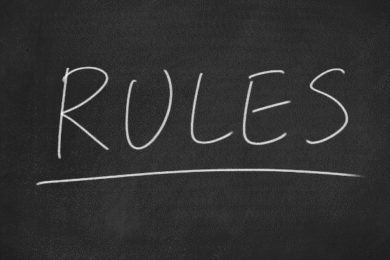Five Marketing Predictions for 2025
Jan 2, 2025By this point, most marketers have become accustomed to the never ending whirlwind of change and evolution in the digital…

Imagine your company has developed a groundbreaking SaaS platform that uses AI. It’s faster, more accurate and more cost-effective than anything else currently available on the market. You have the idea, the talented development team and the budget to launch it to the world. But how do you market it to your target customers?
The challenge is that your ideal customer (possibly a Head of Procurement or a Head of Operations at a manufacturing firm) is flooded with sales messages. Their LinkedIn feed is a stream of sales pitches, their inbox is overflowing with promotional emails, and they are constantly invited to webinars and conferences. Traditional marketing gets lost in this deluge.
This is the core challenge of B2B technology marketing. It’s about communicating the benefits of your product better than your competitors, rather than simply telling your customers the features of your product or service. It’s a complex discipline that blends deep technical knowledge with strategic communication, data-driven execution and an unwavering focus on the customer’s business outcomes. The goal is to position your complex technology as the indispensable solution to your target audience’s most critical problems.
B2B technology marketing is unique, distinctly different from both B2C marketing and B2B marketing in other sectors. Understanding these nuances is the first step to creating effective marketing campaigns.
Buyers are considering 62% more brands before making a purchase compared to 2021. This extends sales cycles by up to 18 months, involving multiple stakeholders, such as end-users, IT administrators, financial controllers and C-level executives. Marketing must nurture each of these personas throughout the entire customer journey with tailored content.
The cost of a wrong decision is monumental for your buyer. Choosing the wrong technology platform can result in wasted budgets, operational downtime and significant profit risks. Therefore, B2B technology marketing must build immense trust and demonstrate tangible ROI long before a contract is signed. For 39% of B2B decision makers, a typical sales cycle lasts 1-3 months, with 5% lasting an incredible two years or more.
Marketing must, oftentimes, prioritise education over promotion, establishing your brand as a thought leader and a trusted advisor. This will also boost the SEO value of your website, particularly for AI-driven search that focuses more on informational search queries.
While the purchase is ultimately justified with rational data (such as return on investment (ROI) and cost/benefit analysis), it is still driven by human emotion. Marketing must appeal to both the logical need for efficiency and cost savings, as well as the emotional desire for a competitive advantage. By communicating the benefits of your product and how it will make a customer’s life easier, you can effectively appeal to their emotional buying impulses.
Most of the time you’ll be selling software, cloud services, telecom services or complex systems, not a physical product. Your marketing must make the intangible tangible through demos, free trials, case studies and detailed documentation that clearly articulates the benefits as well as functionality.
To build an effective marketing strategy, it’s crucial to understand the key drivers of success and the common pitfalls that can derail your efforts.
Relying on a single channel for lead generation is a high-risk strategy. Algorithms change, new platforms emerge and audience attention shifts. A robust B2B technology marketing plan integrates multiple channels to create a cohesive and omnipresent brand experience.
A multichannel strategy ensures you meet your potential customers wherever they are, reinforcing your message and building familiarity. Here’s how key channels work together:
This is your foundational pillar and “always-on” channel. High-quality, keyword-optimised content (blogs, whitepapers) attracts organic traffic and establishes authority. Content and SEO fuels all other channels.
Paid campaigns on LinkedIn, Google and other platforms allow for precise targeting and rapid demand generation. They are perfect for promoting your top-tier content, targeting specific account lists for ABM and driving event registrations.
Far from dead, email marketing remains one of the most effective channels for nurturing leads through the funnel. It allows for personalised, automated communication that delivers the right content to the right person at the right time. In 2025, for every £1 marketers spend on email marketing, an average ROI of £36 – £42 is achieved.
LinkedIn is the undisputed king of B2B technology marketing. It’s where you build your brand, share content, engage in industry conversations and connect with potential customers and influencers. That’s why 84% of B2B marketers cite LinkedIn as their most valuable social media platform.
Webinars, conferences and trade shows provide unparalleled opportunities for in-depth engagement, product demonstrations and direct conversations with prospects and customers. They are a great place to network and get to know your potential customers.
Securing coverage in top-tier tech and industry publications builds third-party credibility, improves SEO backlinks and dramatically expands your reach.
The marketing magic happens when all of these channels are integrated. For example, a visitor finds your blog via SEO content on Google, you retarget them with a webinar ad on LinkedIn (Paid Social), and they attend and become a lead. You nurture them with a personalised email sequence (Email Marketing) that offers a case study (Content), eventually leading to a sales demo (Conversion!).
With B2B technology marketing, intuition is replaced by insight. Data and analytics are the centre of your marketing operations, allowing you to measure, optimise and prove ROI.
The ultimate goal is to create a closed-loop reporting system by integrating your marketing automation platform with your CRM. This allows you to:
Without this data-driven approach, marketing remains a cost. With data insights, marketing becomes a predictable, scalable revenue driver that quickly pays for itself.
Need help with your B2B technology marketing? Speak to one of our experts today to discuss your next project.
There is no single channel that is the most effective when used alone. The most effective strategy is an integrated, multi-channel approach. However, for most B2B tech companies, a combination of content marketing and SEO for organic growth, along with targeted LinkedIn advertising for demand generation, forms a powerful marketing foundation.
This depends on your sales cycle. Top-of-funnel metrics, such as website traffic, can improve within the first few months. Lead generation typically takes 3-6 months to yield significant results. Impacting pipeline and revenue, especially for enterprise sales, normally requires a minimum 6-12 month commitment to see sustained results. Remember, B2B technology marketing is a long-term investment and not just a quick fix.
Extremely important. Video is an excellent way to explain complex technology. Product demos, customer testimonials, explainer animations and thought leadership interviews are highly engaging forms of content that can simplify your message and dramatically increase conversion rates on websites, landing pages and social media.

By this point, most marketers have become accustomed to the never ending whirlwind of change and evolution in the digital…

Staying top of mind with decision makers is more challenging than ever in competitive B2B sectors. Prospects are flooded with…

As 2025 draws to a close, it’s time to reflect on how Google’s confirmed SEO algorithm changes played out and…

As we approach 2026, the pace of change across search, paid media, and social continues to accelerate. The introduction of…